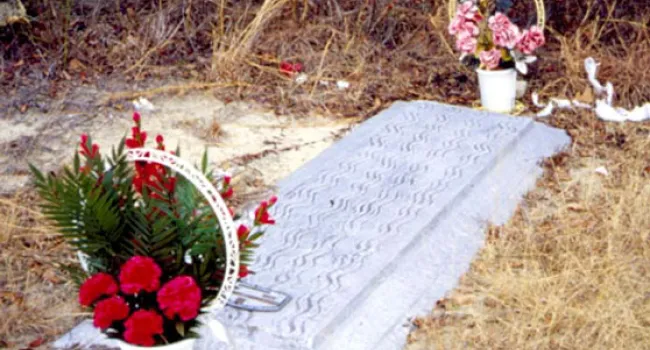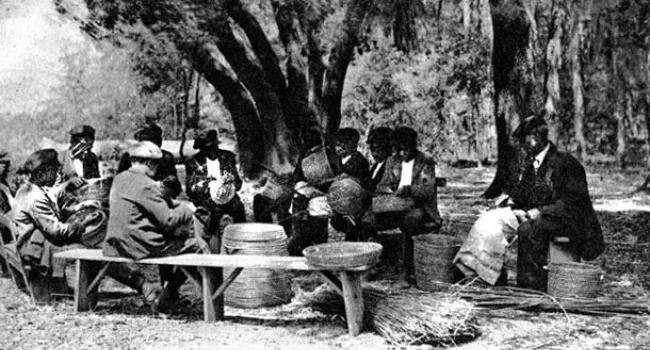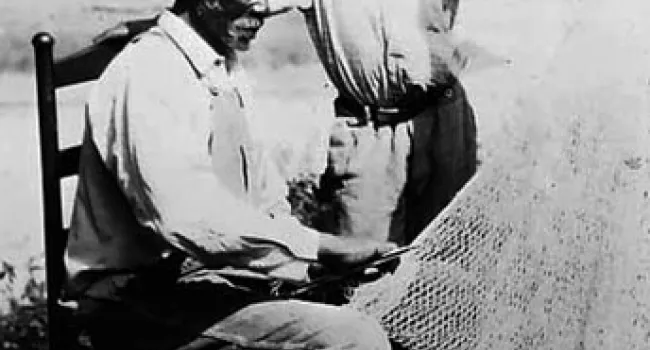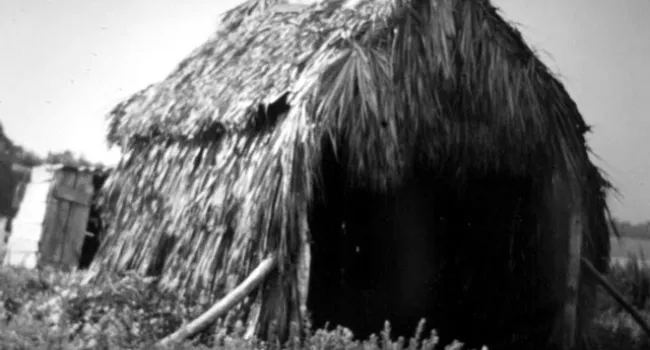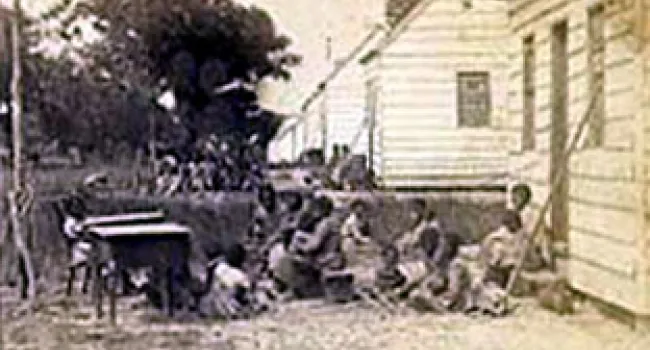
Alfred Hutty painting of a Lowcountry group of singers. These men and women are quite likely the musicians for a "shout" ceremony, for they are singing and clapping their hands rhythmically. The "shout" is more than simply a song; it is also an important spiritual expression. Charlotte Forten, an African American woman from Philadelphia who went south to teach on the Sea Island plantations in 1862, described the combination of a song with repeated responses to a verse sung by a separate group of musicians, while a ring of shouters moved in a circle, keeping time to the music in a shuffling step. The bodies of the men and women in this painting seem to be swaying to the music they are creating, although they themselves are not actually in a ring dancing. Some "shouts" were characteristic of a particular African music form, in that the refrain was repeated, and followed a verse sung by a leader, a form described by musicologists as "call and response." From the Robert Coggins Collection, Marietta, Georgia.
Courtesy of the Morris Museum of Art, Augusta, Georgia.
Standards
- This indicator was written to promote inquiry into the unique development of ethnic, political, and religious identities in the New England, Mid-Atlantic, and Southern colonies.
- This indicator was developed to encourage inquiry into how the three British colonial regions developed in terms of their culture, economies, geography, and labor. The indicator was also developed to encourage inquiry into the unique story of the development of South Carolina.




